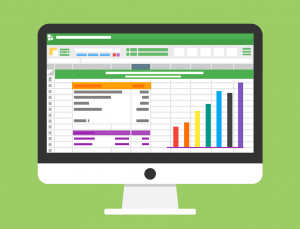Getting Started in eCommerce
Getting into eCommerce selling can be incredibly rewarding. Statista reported that global spending online has reached around $2.8 trillion this year. With a number like that, there’s no wonder people are looking to grab a share! There’s no restrictions to who can get involved – from students to new parents to retirees. In this article, we’ll take a look at reasons you should get into eCommerce, and how to get started.
You’re bound to have your own reason for thinking about getting into eCommerce. Maybe you want a more family-friendly business? Perhaps you want to leave the 9-5 grind and get a better work-life balance? Or maybe, you want an income that you can earn while travelling the world? We hear these types of reasons all the time, and you can read countless stories of successful entrepreneurs online. But why choose eCommerce? Here’s just three of the common reasons to jump in.
Low start-up and operating costs
Especially if you’re using suppliers to DropShip your orders, you won’t need a warehouse. Your staffing costs can be minimal – maybe even just yourself! You’ll need a reliable internet connection and a way to manage your orders – a laptop or tablet, usually. There’ll be costs for hosting and some fees for sales platforms, but these are usually minimal.
Flexible
Ideally, you’ll be monitoring your business at least once a day – you’ll be providing customer service, amongst other considerations. But the hour of the day? That’s up to you! Your business has the potential to earn you money 24/7! Whether you’re waiting until the kids are in bed, you’re managing your business on your commute, or you’re an early bird who likes the peace of 4am – all of these are perfect opportunities. And because your business is internet-based, you can work wherever you are in the world, selling to customers worldwide.
Scale quickly
Most people starting eCommerce businesses start small, with just a few products. Once you’ve got the hang of it, it’s easy to increase the numbers of products you’re selling. That means you can scale your business – and your profits – quickly.
How Do I Get Started in eCommerce?
Depending on your current circumstances, there are several ways you can get involved. If you’ve got a chunk of spare cash, buying an existing eCommerce store is an option. Buying in can be fast, but there’s a lot to consider – as always, there’s due diligence to be exercised. As we write this, we see eCommerce businesses for sale for as little as £1900, with turnover of £10,500. These smaller businesses might give you the opportunity to grow the business, but not a huge profit initially. We’ve also seen a menswear brand for sale for £50,000 though, and we’re sure there’s more expensive options available! If you can afford to buy your way in, and find the right opportunity for you, great.
Buying in isn’t the only way though. If your piggy bank is empty, or you can’t find the right opportunity to buy, don’t worry! We’ll look at starting an eCommerce business from scratch further down the post.
Buying an eCommerce Business
If you’re in the market for buying an eCommerce business, here’s a few things to think about before taking the leap. It’s not designed to be comprehensive advice though – this is guidance of where to start your investigation. Always seek legal advice before you purchase a business.
Research, research, research!
You need to think about eCommerce the same as any other business – you must do your homework before jumping in. The business might be driven from your phone or PC, but there’s a lot to consider before you start working. Ensure there are ways for the business to flourish, and that you complete analysis of competitors and your own purchase. You’ll need to look at technical aspects, including site rankings and Google Analytics, as well as traffic patterns. If you can identify ways you can help the business grow, it’s worth looking into further. You’ll also need to look at what powers the website – there may be other considerations once you’ve examined this.
Are you up to it?
How much work does the current owner put in each week? If they work a 60-hour week, and you’re a full-time Mum, this opportunity might not be right for you. If it’s more than you can manage, can you outsource or employ someone and the business remain profitable?
On top of the time commitment, you need to consider if you have the skills you’ll need. Will you need to learn a new system? How long will it take you to learn that system? Can the current owner train you? If not, can you learn from YouTube videos, or will you need to pay for custom training? These are all things you’ll need to know and manage accordingly.
If you’re thinking of investing in a business, the accounts are likely to be the first place you look. This should go without saying, but we’ll say it anyway! Have an experienced, qualified accountant scour the accounts.
Get every report you can from the business, and read them carefully, from start to finish. Ask all the questions that spring to mind, even if they seem like daft questions. Better to ask a daft question at this stage… it could save you from an expensive mistake down the line.
Additional costs post-purchase
It’s not just a case of the purchase price of the business you’re considering buying. You need to consider branding, website maintenance costs, digital asset costs, supply chain costs and marketing amongst others. If you’re lucky, your potential investment might only need a few changes to increase profits and reach. However, you may want to do a complete overhaul and take the business in a different direction. If that’s the case, you’ll need to ensure you have the means to achieve that.
Digital strategy
Once you’ve looked at the numbers, you’re going to want to consider the digital presence and strategy as it stands. Does the business have social media presence? Are they missing any channels? Is their content effective?
Not only that, where is the traffic to their website coming from – are they using paid advertising? Return on investment is a huge consideration. If paid adverts keep the business afloat, you may need to work out how to minimise those costs. If the figures aren’t great, don’t worry, that can potentially work in your favour. The business is a chance to dramatically increase the potential profits with some work. That may mean re-writing content, or working with a digital marketing expert – but factor that cost into your purchase.
No, not your own – we’re talking suppliers and distributors! If you buy the business, you’re likely to acquire existing agreements with suppliers, so you need to completely understand them. How long have they been in place? Can you negotiate a better deal? Are there contingencies in place if a supplier folds? Read those agreements carefully though – the deal with the supplier may be null and void if the business changes hands. As always, it’s better to be safe than sorry here. You might also consider contacting the suppliers to discuss how well the arrangement has worked for them.
In addition to suppliers, look at the relationship with customers. Scrutinise the customer service offered through all their social media channels. Check their Twitter account, ask a question via the website, call and ask about delivery times and so on. Customer service and subsequent engagement will impact on trust and word-of-mouth, so it’s a good idea to check this out. In the same vein, check out reviews on websites such as Trustpilot and Reevoo. There is nearly always a disgruntled customer somewhere – no business gets things perfect 100% of the time. Don’t look for perfect scores, look for realistic. But read carefully – if your intended company has been falsely inflating their reviews, or faking them, ask yourself why.
If you’re new to eCommerce, it’s definitely a good idea to check with eCommerce specialists like us for advice. We’re happy to advise you and help you identify opportunities to develop the business.
Getting Started in eCommerce From Scratch
This might seem easy, when you see some posts online. You’ll read everywhere posts like ‘how to start your business in just 30 minutes’. We’ll be honest – it’s going to take a bit more than that. Over 90% of DropShipping businesses fail in their first year. That doesn’t mean yours will – many of those failures could have been easily avoided by using some of these tips!
Research, research, research!
We might be sounding like broken records here, but it’s so important that we’re standing by making this point again! Don’t make assumptions – make sure you’ve done your homework, so you can be confident you’re making the right decision. You’re going to be competing with other retailers as well as retail giants, so you must be careful. Look into the competition for each step. If there’s a gap in the market, there’s probably a reason – razor thin margins, shipping issues, and so on. Find out why nobody has exploited it before you go for it, to save you time and money later on. It might be that nobody has thought of it – but it’s best to be sure.
It’s best to keep notes, bookmark useful pages and make checklists so you can refer to them later. There are thousands of tools that allow you to keep those notes organised across several devices. Apps our team love include Google Docs, Google Calendar, Trello and OneNote, but find what’s best for you. If you’re successful, you might decide to set up another business – and these notes might end up being invaluable.
Choose your products
What are you going to sell? Simply picking what is trending isn’t the best plan – there’s already thousands of sellers doing that. Do your research, establish what is selling well and select products that suit the brand of your company. Listing trending items can be useful, but with so many others selling them, they’re unlikely to be your best sellers. Think of them as a draw to your listings. With great marketing and cross-selling, you can take advantage of impulse sales while the customer is there.
Don’t just consider inexpensive items. Lower priced items take the same amount of effort to market than expensive and luxury items, so choose carefully. A niche with higher priced items is more likely to reap higher profits than low-cost, trending items. So as we said earlier, do your research. Work out which products will fit the business you are building, and the customers you are targeting, best.
Finally, be careful with the items you list – we strongly advise against selecting counterfeit goods, or copies. They’re unethical, and illegal in many countries. The potential hassle is not worth it. At best, you’ll receive complaints and bad reviews from customers; at worst, you risk massive fines that compromise your business. There are better products you can list, from great suppliers, that are less likely to cause you a headache.
Your own website?
Thinking about your sales channel strategy – are you going to sell through your own website or not? There are hundreds of ways to create a robust, reliable website without needing technical knowledge. Systems such as Shopify, WooCommerce and BigCommerce allow you to create attractive websites quickly, and can scale as you do.
If you do create an eCommerce website, you’ll need to work hard to get customers there. There are thousands of other options available to customers, so you need to encourage them to choose you. Your website must be trustworthy – secure, visually appealing and have a great customer journey with easy checkout. It must be easy to complete a sale – otherwise even with amazing deals, you’ll end up with abandoned carts. On top of that, you’re also going to need to think about how customers will find you. They won’t search for your business name until they have bought from you and know you’re trustworthy. Great SEO-friendly listings, combined with digital and social media marketing is going to be paramount for your success.
Pick your platforms
When choosing your marketplaces, don’t just bank on Amazon and eBay because they’re the most well-known in the UK. They’re already flooded with sellers, and winning the buy box can be incredibly difficult, especially with trending items. Let’s just refer to point 1 again: do your research! Establishing your business as a big fish in a small pond might serve you better. Look at building your business on smaller marketplaces, especially once you’ve received excellent reviews on those channels.
And don’t assume that selling in the UK alone is going to be easiest, or the best. Of course, there are reasons that selling in the UK is great, but don’t limit yourself – think globally! With strategically placed suppliers, you can sell on local marketplaces worldwide without worrying about shipping, or storage costs. People want to buy from their favourite marketplace, one they’re already registered with – that’s why Amazon Prime is popular! Particularly if you’re selling something that isn’t easy to purchase in those countries, you’re more likely to make sales. Perhaps you’ll be selling in India via Flipkart, ShopClues or KartRocket, or in Scandinavia through Fyndiq, Coolshop or Bol.com? The opportunities to grow worldwide really are endless – you just have to identify the right opportunities.
Establish your marketing strategy
Setting up your website, finding your supplier, picking your marketplaces – they’re all great strides to starting your business. However, customers aren’t going to find their own way to your listings – you’ll need to do some great marketing. Don’t rely on gimmicks – there’s enough of those, customers are bored with them and they’re difficult to do well. To ensure your long-term success, create a strategy that makes sense. Make sure your advertising has a storyline that complements your brand.
Establish your target customer, and learn everything about them. Which social media platforms do they use, and when? When do they shop, and how? Are they likely to make impulse purchases? This is all valuable information to help you build your marketing strategies and net those sales.
Find a reliable supplier
In the world of DropShipping, this one can be challenging. Partnering with a supplier who doesn’t share your values can lead to troubles. Once again… do your homework. If you’re not 100% confident in a supplier, we’d advise you to think again. It’s important to be sure they will reply to your emails and fulfil your orders in good time. We hear horror stories all the time! Overseas suppliers that over-promise on the quality of their products, or the amount of time that shipping will take. You don’t want to risk bad reviews that damage your brand, or end up needing to provide refunds. (That said… we know not all overseas suppliers are bad guys – just do your due diligence!)
While you’re planning for the worst, you also need to prepare for the best possible outcome! How will your supplier manage if your business scales up dramatically? Can they fulfil hundreds of orders, should a certain product suddenly start trending? If they can’t, what will you do? You don’t want to risk losing sales, or being penalised by a platform for overselling or cancelling orders. Establish contingency plans, such as having a backup supplier. That might be easy if the system you are working with has plenty of suppliers. It might be tricky though, if you don’t use a DropShipping platform.
Find a system that works for you
Finding a system that covers everything you need it to can be tricky. For good measure, we’ll just say it again, one last time – do your research carefully. There are plenty of systems out there that claim to do everything you need. However, some need extra software at extra cost to manage certain aspects of your setup. Others may be missing crucial functionality that you need, so be fussy! This is what your business will rely on, so it’s not the time to make do. Look at popular options, then narrow your shortlist, and arrange calls or demonstrations where possible. Once you’ve done that, read reviews, and make use of free trial periods. Make sure you’ve got everything you need in the system, and that you like the way it works.
Overall, it’s important to remember that perfect planning prevents poor performance. It might be a cliché, but it’s absolutely true. Lack of planning is a major factor in DropShipping businesses failing in their first year! Investing time in research and preparation is investing in your future success.
We can discuss your ideas with you and make recommendations about systems, platforms and so on. We’re experts in everything eCommerce, and we’ve a long list of partnerships and certifications. Got questions or want to talk about your business? Get in touch today.
Categories
- Amazon Integration 10
- Amazone Store Design 6
- Analytics 2
- Analytics 2
- Business 1
- Case Studies 6
- Company Updates 16
- Digital Marketing 12
- Drop Shipping 6
- eBay Integration 5
- eBay store design 39
- ecommerce blog 99
- ecommerce solutions 10
- eCommerce Store Design 3
- eCommerce Trends 30
- Events 11
- General 1
- Google Adwords 3
- Infographics 6
- Internet Marketing 8
- Linnworks 15
- Linnworks Apps 10
- Magento Development 18
- Magento eCommerce Solution 14
- Marketplace Strategy 16
- Mobile App Development 4
- Multi Channel Ecommerce Solutions 3
- Multi Channel Integration 4
- Networking 2
- Pay Per Click 1
- SEO Services 2
- Social Media 3
- Software 3
- Software Development 2
- Technology 2
- Website Designing 4




